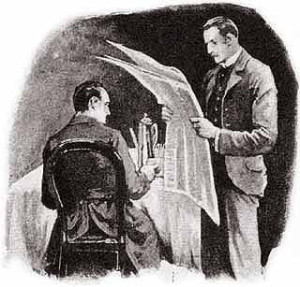Mystery Tribune publishes my latest short story
Posted on January 3, 2022 inBlog, Mystery Tribune, Short stories
A short story of mine titled ‘The Easy Way Out’ has been published by renowned American literary magazine Mystery Tribune.
Dedicated to mystery and suspense, Mystery Tribune was founded in New York in 2011 and features an array of fiction and art, publishing daily articles as well as print and digital issues.
Powered by a team of contributors from around the world, the magazine’s mission statement reads: ‘With the firm belief that “behind extraordinary mystery books or pieces of art, there are extraordinary people”, we search the globe to bring you the most captivating work from both established authors and creatives as well as emerging talents.’

Authors published by Mystery Tribune include Lawrence Block, Max Allan Collins, Walter Mosley, Reed Farrel Coleman and Lynne Barrett.
‘The Easy Way Out’ depicts the dramatic unravelling of Jake Selby, who is part of a group of correctional officers fired for allowing powerful criminals to receive beneficial treatment over several years in a New Jersey prison. Struggling to shake off his guilt, Jake moves to the coast to start over, but his past comes back to haunt him in tragic fashion as he attempts to cling to his sanity.
A fast-paced mystery laced with psychological suspense and intrigue, you can read ‘The Easy Way Out’ here.
New short story available now
Posted on May 18, 2021 inBlog, Short stories
A short story of mine called ‘Pecking Order’ has been published in the latest edition of Fahrenzine.
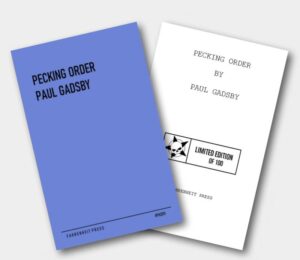
Fahrenzine, launched in 2020, is an innovative publishing venture from Fahrenheit Press where each issue features a single short story ‘from one of the most exciting crime fiction talents in the world’ and is strictly limited to 100 exclusive hand-numbered copies.
Designed in no-nonsense typography and published in a casual pamphlet style, Fahrenzine is inspired by an old-school punk heritage and pays homage to the pioneering spirit of classic zines of the past such as Chainsaw and New York Rocker.
My story, Pecking Order, is a tense tale about a robbery gone and depicts a pivotal moment in the lives of two lackeys jockeying for position within a crime organisation headed by an enigmatic and ruthless boss. Click here to order this copy of Fahrenzine and enjoy some of the best fresh crime fiction out there right now.
[Top]Beat to a Pulp publishes ‘Best Laid Plans’
Posted on September 10, 2020 inBlog, Short stories

A short story of mine called ‘Best Laid Plans’ has been published by the Beat to a Pulp webzine.
It’s a gripping tale about a seasoned hitman carrying out a testing and carefully researched assignment in America. You can read ‘Best Laid Plans’ by clicking here.
The highly revered Beat to a Pulp has been publishing stylish stories that pack a punch for more than a decade, from hardboiled crime and noir to westerns, horror and science fiction. Check out their impressive list of books and stories here. Some of the illustrious authors published by Beat to a Pulp over the years include Eric Beetner, Jen Conley, Ed Gorman, Garnett Elliott, Todd Robinson, Vin Packer, Patricia Abbott and Charles Ardai.
‘Best Laid Plans’ follows quick on the heels of my short story, ‘Truth’, published by Close to the Bone, and ‘No one has to know’, published in Rock and a Hard Place magazine. For fans of short fiction, there is also ‘Washed Up’, my competition-winning entry published in Fahrenheit Press’s Noirville anthology.
[Top]Another short story of mine is published
Posted on September 1, 2020 inBlog, Short stories
My short story, ‘Truth’, has been published by esteemed crime publishers Close to the Bone.
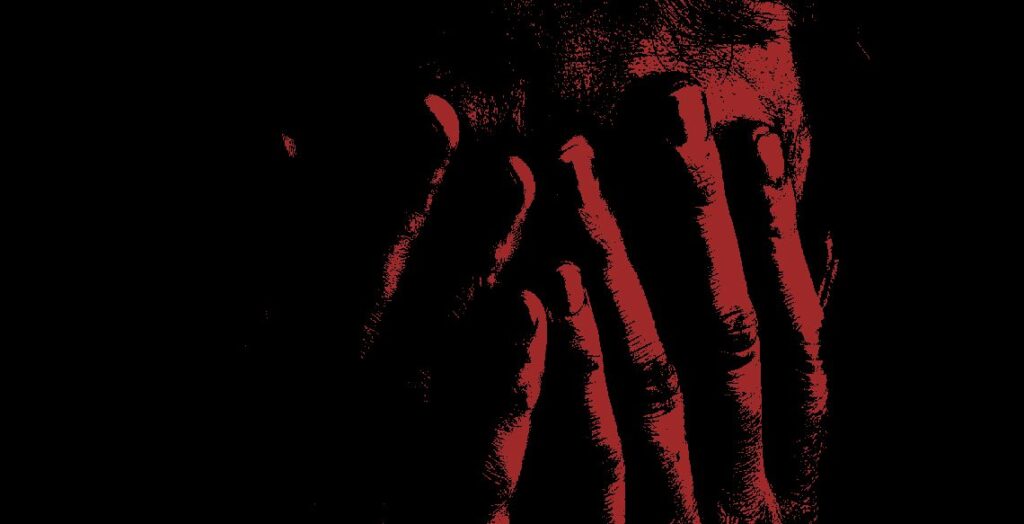
It’s a quick, thrilling read at just over 2,500 words so won’t take you long to enjoy. You can read ‘Truth’ by clicking here.
Close to the Bone has been publishing quality, edgy crime fiction – in both short and long form – for a while now, and I’m honoured and humbled to be included amongst its stirring output. Check out more about their books here.
‘Truth’ follows on the back of my other published short stories, notably ‘No one has to Know’ in Rock and a Hard Place magazine and ‘Washed Up’ in Fahrenheit Press’s Noirville collection.
Watch this space for more short stories of mine coming soon…
[Top]Rock and a Hard Place magazine out now
Posted on March 23, 2020 inBlog, Short stories
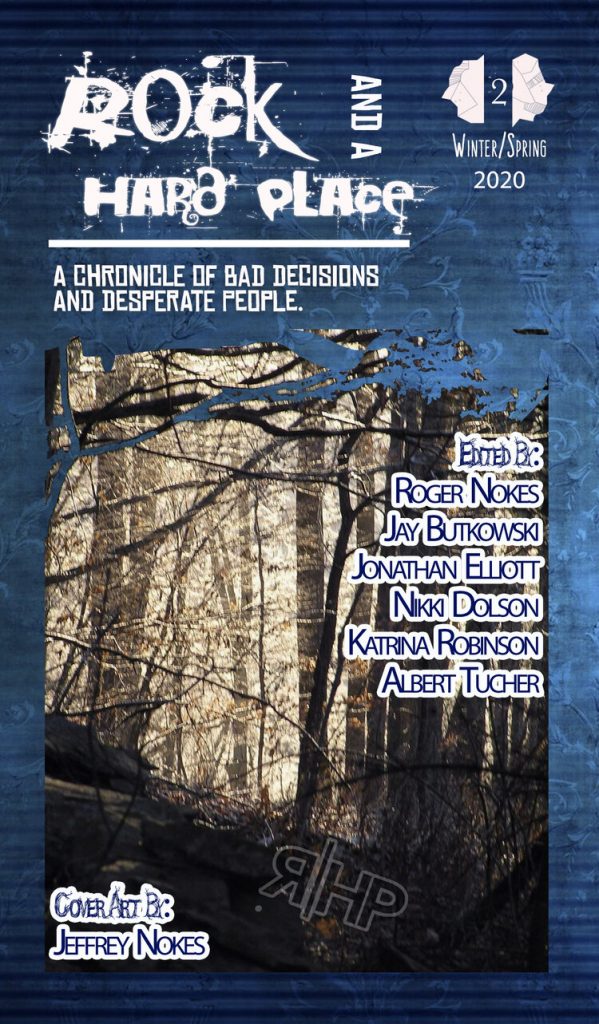
Issue 2 of literary magazine Rock and a Hard Place – which includes my short story ‘No one has to know’ – has just been released.
Available in print or ebook, the magazine features a fine collection of crime fiction, poetry, essays and art, chronicling tales of bad decisions made by desperate people.
Based in the US, Rock and a Hard Place expands the theme of noir beyond simply crime fiction to an overarching view of the world, depicting life on the margins for souls at the bottom rung of the ladder where one mistake is one too many.
Rock and a Hard Place issue 2 is available to order on Amazon in paperback or Kindle. More details about the concept behind the project and the editors working on it are available here.
It’s a great read that you’ll be sure to love – and if you do, please leave a review on Amazon.
[Top]My short story selected for literary magazine
Posted on February 18, 2020 inBlog, Rock and a Hard Place magazine, Short stories
 A short story of mine titled ‘No one has to know’ is to be published in the revered literary magazine Rock and a Hard Place.
A short story of mine titled ‘No one has to know’ is to be published in the revered literary magazine Rock and a Hard Place.
The American publication received a wealth of submissions for its upcoming issue, and my story is one of the chosen few to make the cut.
The ethos behind Rock and a Hard Place magazine is to highlight characters struggling at the bottom rung of the ladder, whether they got there through bad luck or their own bad choices. It gives a voice to the marginalised, the poor, the fallen, and the desperate – and focuses on what happens when they’re put in a tight spot without having the means to get out of it.
The magazine’s editorial board includes Roger Nokes (who writes under the pseudonym Stanton McCaffrey), Jay Butkowski, Jonathan Elliott, Nikki Dolson, Katrina Robinson and Albert Tolcher, an esteemed and talented bunch who have written for the likes of Shotgun Honey, Out of the Gutter, Near to the Knuckle and The Guardian.
‘No one has to know’ is about a lowly hardware depot worker who is forced to make a difficult and risky decision as his life reaches a significant crossroads. The issue it will feature in is scheduled to be released in March.
The previous issue of Rock and a Hard Place can be found here.
[Top]Noirville crime anthology now on sale
Posted on March 30, 2018 inBlog, Fahrenheit Press, Noirville, Short stories
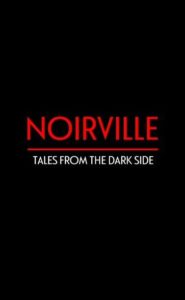 The hotly-anticipated crime anthology ‘Noirville’ – featuring my short story Washed Up – has just been released by Fahrenheit Press.
The hotly-anticipated crime anthology ‘Noirville’ – featuring my short story Washed Up – has just been released by Fahrenheit Press.
The crime fiction publisher launched an open short story competition towards the end of 2017 in order to showcase the most exciting, noir-themed writing from around the globe.
An independent panel of judges – consisting of authors and bloggers – whittled down the many hundreds of entries to the 15 exhilarating stories published in the anthology.
The book is now available in paperback and e-book formats.
You can order Noirville direct from Fahrenheit here while it is also available on Amazon. Anyone who likes bitesize, gripping crime fiction that packs a punch they can’t see coming should grab their copy now.
Noirville, which has the tagline ‘Tales From the Dark Side’, contains stories written by the following authors:
- Steve Bailey
- Sarah M. Chen
- Patsy Collins
- Russell Day
- Jen Delozier
- Paul Gadsby
- Joe Guglielmelli
- Chris Hyatt
- Scott Miles
- John Scheck
- John Schreier
- Jeff C. Stevenson
- Alex Shaw
- Marc Sorondo
- Glenda Young.
My short story to be published in Noirville anthology
Posted on February 5, 2018 inBlog, Fahrenheit Press, Noirville, Short stories
I’m thrilled to announce that a short story of mine, Washed Up, will be published in the highly anticipated ‘Noirville’ anthology soon to be released by Fahrenheit Press.
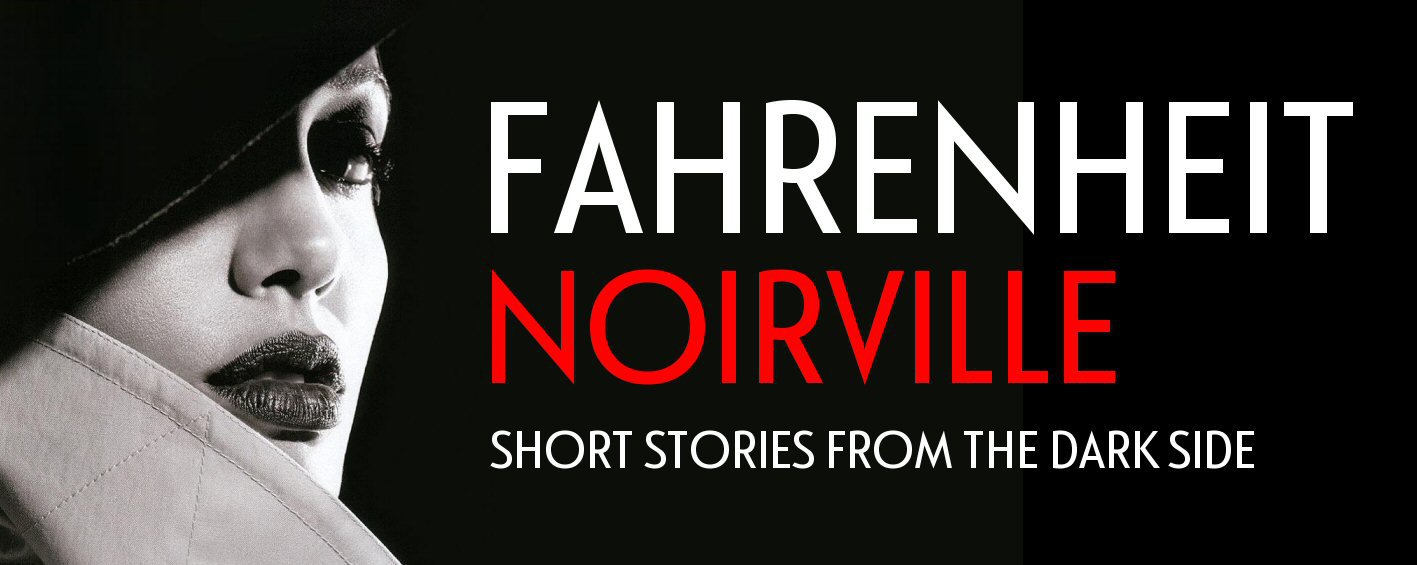 The book will be a collection of 16 short stories and follows an open competition run by the swaggering Los Angeles-based crime publisher, which invited anyone to submit an entry.
The book will be a collection of 16 short stories and follows an open competition run by the swaggering Los Angeles-based crime publisher, which invited anyone to submit an entry.
Hundreds of entries were assessed blind by an external and independent panel of judges, who were given no clues about the identity or writing experience of the authors.
The judges were:
Jo Perry (author)
Kate Moloney (blogger at Bibliophile Book Club)
Gordon McGhie (blogger at Grab This Book)
Janet Emson (blogger at From First Page to Last)
Verity Wilde (blogger at Verity Reads Books)
David Nemeth (blogger at Unlawful Acts)
‘Noirville’, which is carrying the tagline ‘Short stories from the dark side’, will be published in paperback and ebook formats in March. Watch this space for further details and how to grab your copy as the release date nears.
Find out more at https://fahrenheit-press.myshopify.com/products/noirville-paperback
[Top]
Hats off to Fahrenheit Press
Posted on September 1, 2017 inBlog, Fahrenheit Press, Short stories
I like this: anarchic crime fiction publisher Fahrenheit Press has launched an open – and I mean truly open – short story competition.
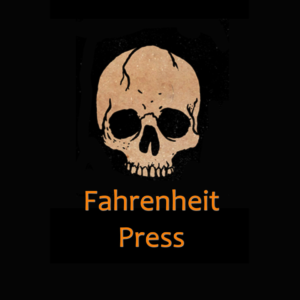 The ‘hot punk’ (its own words) publishing house launched with a swagger in 2015 and is doing a mighty fine job of releasing fresh, invigorating titles with a dashing verve to its marketing – just when an attitude like that is so badly needed in global publishing.
The ‘hot punk’ (its own words) publishing house launched with a swagger in 2015 and is doing a mighty fine job of releasing fresh, invigorating titles with a dashing verve to its marketing – just when an attitude like that is so badly needed in global publishing.
As well as taking a punt and giving brand new authors a spotlight, Fahrenheit is also doing its bit for the crime genre business in general – rescuing some of the books left for dead by the now defunct 280 Steps, giving them a new lease of life.
Founded by international publishing veteran Chris McVeigh, the company’s approach is nicely summed up in the final bullet point of its submission guidelines: If you want to be treated like a delicate little snowflake we’re definitely NOT the publisher for you – try Faber & Faber, they’re lovely.
And now Fahrenheit is running a competition open to anyone – yes, anyone – with the top 12 short stories to be published in a collection titled Noirville. The five-strong judging panel is made up of four independent bloggers and Fahrenheit author Jo Perry.
This is the kind of thing that could easily have been set up on the inside – Fahrenheit has published and established some mega-talented authors and would be well within its rights to circulate this concept to them and get the anthology done more swiftly through an invitation-only process with known and trusted contributors.
But true to its innovative ideals, the gig is open to any writers who fancy taking a chance and submitting a story. Interested? Full details and submission guidelines can be found here.
[Top]Hemingway – 6 of his best opening lines
Posted on July 2, 2017 inBlog, Ernest Hemingway, Short stories
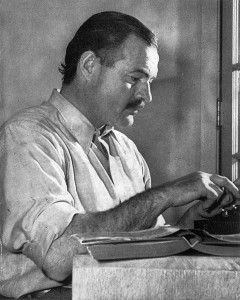 If you appreciate words, stories and style, there’s nothing quite like sitting down and reading Ernest Hemingway, who died on this day in 1961. His opening passages in particular were simply masterful – so here are 6 of his best, and why…
If you appreciate words, stories and style, there’s nothing quite like sitting down and reading Ernest Hemingway, who died on this day in 1961. His opening passages in particular were simply masterful – so here are 6 of his best, and why…
Revered for his economy of words, Hemingway’s writing style has been widely imitated over the years but never quite matched.
In much the same way that an elegant Roger Federer backhand makes playing tennis look easy, Hemingway’s polished, understated prose makes the art of creative writing look simplistic, when of course it’s anything but.
The deceptive ease and rhythmic control he had over his craft is evident from how he started his works. The beginnings of his short stories and novels give you an instant feel that you are about to read something special from a unique and authoritative voice. Here are my top 6 Hemingway opening lines:
It was late and everyone had left the café except an old man who sat in the shadow the leaves of the tree made against the electric light. A Clean, Well-lighted Place
This graceful short story, first published in the New York-based periodical ‘Scribner’s Magazine’ in 1933, depicts how two waiters – one old, one young – gossip about a deaf old man who doesn’t want to leave their café as closing time passes. The haunting loneliness of the old man, and the intrusive scrutiny his life is about to come under from the waiters who want to close up for the night, is immediately made clear, igniting a vivid narrative to come.
It was now lunch time and they were all sitting under the double green fly of the dining tent pretending that nothing had happened. The Short Happy Life of Francis Macomber
Wow, something clearly has just happened (an event which threatens to mark the proud, high-society protagonist as a coward, as it turns out) in this safari trip tale laced with fear, adultery and tragedy. Hemingway, who loved hunting in Africa, knew all the technical details to make this fascinating but vicious terrain his natural home, and in this short story he lets the pressure build to an exquisite climax.
He was an old man who fished alone in a skiff in the Gulf Stream and he had gone eighty-four days now without taking a fish. The Old Man and the Sea
So we have the central protagonist, his main problem and his objective all in the first line. Not bad, eh? This is a prime example of Hemingway’s economical style. Each word is given its appropriate weight as he cuts to the bone of the story and the human condition about to be explored. What Hemingway often had to say wasn’t simple – but had to look it, and this unembroidered opening line is a perfect way of introducing us to what unfolds as a nuanced, emotive struggle of a Cuban fisherman. This short novel, the last major fictional work of Hemingway’s published in his lifetime, won the Pulitzer Prize for Fiction in 1953 and a year later was a contributing factor to him being awarded the Nobel Prize in Literature.
The attack had gone across the field, been held up by machine-gun fire from the sunken road and from the group of farmhouses, encountered no resistance in the town, and reached the bank of the river. A Way You’ll Never Be
What I love about this intro is the simple picture it paints, and although it’s in the past tense it feels charged with motion. Hemingway liked to cut the adverbs and any superfluous flourish in order to detach himself from his stories, to let them radiate purity and speak for themselves. This opening line to a short story set in World War One achieves a beautiful balance of the descriptive and the plain. Even in tales like this where Hemingway dealt with the impact of war and violence, springing from his military experience (he served in the Great War for the ambulance service on the Italian front aged 18), he managed to use few words – terse ones at that – to convey themes of life and death.
He came into the room to shut the windows while we were still in bed and I saw he looked ill. A Day’s Wait
A fine example of an intriguing opening line that hooks us into a story of a nine-year-old boy’s escalating illness during a cold winter, and his father’s difficulty in convincing his son that he will recover. Once again each and every word delicately states its own case. Like much of his work related to death, Hemingway’s writing in this piece carries no sentiment whatsoever, the prose always lean and hard (but never stretching into hard-boiled) and leaving so much of the father-son relationship unsaid, thereby intensifying the emotion.
It wasn’t about anything, something about making punch, and then we started fighting and I slipped and he had me down kneeling on my chest and choking me with both hands like he was trying to kill me and all the time I was trying to get the knife out of my pocket to cut him loose. After the Storm
Hemingway often liked to repeat the word ‘and’ in close succession rather than employ a comma. The effect this had was to convey immediacy and to portray a series of startling images at pace, which is particularly the case in this starkly visual opening line. The almost childlike vigour of this sentence leaves us little room to breathe, heightening the drama and the curiosity.
Another link to Ernest Hemingway on this site can be found in my article 7 of the most underrated short stories ever, which features his work, The Killers.
[Top]7 of the most underrated short stories ever
Posted on January 22, 2015 inBlog, Short stories
The short story is often regarded as an under-appreciated art form. The mainstream publishers have habitually baulked at supporting them in the face of sales figures that compare unfavourably with those of traditional length novels. This has often led authors, particularly crime and mystery ones, to only pen short stories on commission rather than write them out of pure creative enjoyment.
But that hasn’t stopped many of them rising to the challenge of expressing themselves through brevity. Creating a snappy, compelling tale with fascinating characters and quickly weaving it all into a striking conclusion that stays with the reader is no mean feat, and deserves high praise. But some excellent short stories have received more recognition than others, so this feature is to champion my favourite short pieces of fiction that have been underrated – or even criminally neglected – over the years.
The Five Orange Pips, by Sir Arthur Conan Doyle
Many of Conan Doyle’s 56 Sherlock Holmes short stories have of course received glowing acclaim and been adapted in some way for the screen. The likes of ‘The Speckled Band’, ‘A Scandal in Bohemia’ and ‘The Final Problem’ top many people’s favourite lists, but for me ‘The Five Orange Pips’ has always been left, undeservedly so, in the shade.
First published in The Strand magazine in 1891, this is an off-beat tale laced with fascinating elements. The case – or bizarre mystery – is presented by the client, John Openshaw, who has just received a letter with ‘K.K.K’ scrawled on the inner flap of the envelope and five orange pips enclosed. His father received a similar letter three years previously, as did his uncle five years ago. Each of them died in a suspicious accident a few days after receiving the pips. The day after visiting 221b Baker Street to see Holmes, a newspaper report reveals that Openshaw himself has been found dead in the River Thames. Shaken by the death, an emotional Holmes tells Watson: “I shall be my own police. When I have spun the web they may take the flies, but not before.”
The showcasing of Holmes’ deductive skills that follow is particularly divine, and the ending is wonderfully elegant. Interestingly, this is one of only two Holmes short stories where the detective’s client dies. The 1945 film Sherlock Holmes and the House of Fear was partly based on ‘The Five Orange Pips’ while a 2014 episode of the TV show Elementary took some facets of the story.
The Birds Poised to Fly, by Patricia Highsmith
A story of a deranged man whose disappointment in love sparks an irrational reaction that leads to a cruel deception, this is Highsmith at her neurotic best.
Obsessed with dark subject matter throughout her writing career, this story was heavily inspired by a painful moment in Highsmith’s own love life. After engaging in a blissful affair with English doctor Kathryn Cohen during a holiday in Italy in the summer of 1949, Highsmith returned to New York and wrote to her. Each day she awaited a reply from Kathryn that didn’t come, suffering inner torment.
In ‘The Birds Poised to Fly’, Don returns from a holiday romance smitten with Rosalind and writes to her proposing marriage. When she doesn’t respond he convinces himself that her letter was delivered to his neighbour by mistake. He breaks into his neighbour’s mailbox, finds a letter written to him by a lovesick woman called Edith. Don assumes his neighbour’s identity and replies to Edith, arranging to meet her at Grand Central station. Eventually Rosalind replies, refusing Don’s marriage offer. A dejected Don still goes to Grand Central to meet Edith. “The story is so much K and myself” Highsmith later wrote in her diary.
It wasn’t published until 1968, in Ellery Queen Mystery Magazine, before being released as part of Highsmith’s short story collection, Eleven.
The Living Daylights, by Ian Fleming
James Bond is captured in a rare morose mood during this dark, counter-espionage tale that was first published in The Sunday Times supplement of 4 February 1962. Assigned to prevent a prolific KGB sniper – codenamed ‘Trigger’ – from killing a fellow British agent who’s due to make a street crossing between East and West Berlin, Bond waits patiently at his hiding post for three days and nights, contemplating his mission to take out the KGB assassin. A killer killing a killer.
Fleming delves into a corner of Bond’s psyche we’d never quite seen before as he broods over the concept of committing a cold, calculated murder (with no high-octane build-up), something he’s clearly uncomfortable with. Each night he sees an orchestra arriving and leaving a building opposite for practice, a beautiful blonde cellist among them. When the agent is finally ready to cross over to Bond’s side of the street, Bond peers through his rifle scope to see the Russian sniper take up position in the building opposite. ‘Trigger’ is the blonde cellist. Faced with an instant decision and his finger on the trigger, Bond switches aim, shoots the stock of her sub-machine-gun, wounding her hand.
The relieved agent makes it back into MI6 hands safe and sound, but Bond gets an earful from top brass for failing to execute the kill. Bond is always at his most compelling through the theme of disobedience, and Fleming exploits that beautifully in this short work.
ICU, by Dennis Lehane
Intrigue lays at the heart of this tale, which formed part of Lehane’s collection of short stories titled Coronado, released in 2006.
Tension is present from the off when the protagonist, Daniel, is told by a woman regular in his local bar that a couple of guys were in earlier asking after him. Wearing smart suits and ties. A worried Daniel visits his ex-wife, who describes the same guys stopping by earlier looking for him. The mysterious well-dressed men (possibly federal agents, although it’s never revealed) are soon pursuing Daniel in a car chase. He takes refuge in the grounds of a large hospital, shifting from one specialist area to another before settling in the vast ICU unit.
Daniel, seemingly ignorant of his offence, remains in hiding there, becoming acquainted with family members of critically ill patients in the waiting room, and pretending to be a relative of one himself. His world is now one of helplessness, quiet anticipation and confinement.
Lehane’s exquisite turn of phrase and tight prose comes to the fore here, unravelling the character at his own pace and always keeping the reader guessing – not to mention engrossed. The story, more than a passing nod to Franz Kafka’s ‘The Trial’, depicts one man’s journey to grasping the concepts of empathy and humanity, but without making any moral judgements. A fascinating read.
The Killers, by Ernest Hemingway
This 1927 story is an immaculate piece of writing but, perhaps due to its style (minimalist to the core, there is hardly any plot), never attracted as much praise as some of Hemingway’s more famous short pieces such as ‘The Snows of Kilimanjaro’, ‘A Clean, Well-Lighted Place’ and ‘The Short Happy Life of Francis Macomber’.
Two hit men walk into an Illinois diner looking for Swedish boxer Ole Anderson, who they plan to kill ‘for a friend’. The duo tie up the proprietor, George, the cook, Sam, and the lunchroom’s only customer, Nick Adams (a recurring character in Hemingway’s short fiction), and wait for Anderson, who they’re expecting to walk in. But he doesn’t show up and the frustrated duo leave.
George knows the boarding house Anderson is staying at and sends Nick over there to warn him. When told about what happened, Anderson is resigned to his fate and tells Nick there is nothing to be done.
Having spent his younger years in Chicago during Al Capone’s rise to power, Hemingway had a strong knowledge of prohibition-era organised crime and weaves this understated story with an authoritative voice and from a marvellously objective viewpoint.
Duffers of the Apocalypse, by Victor Gischler
Part of the 2006 Damn Near Dead anthology, a collection of invigorating short stories based around senior-aged criminals, this story is dripping with smart, black humour.
Set on a golf course in the grounds of an Oklahoma retirement community (“the land of broken hips and strokes and backs thrown way, way out”), three old timers, narrator Roscoe Carter and friends Tony DeLuca and Pete Dexter, are having a round. A wayward tee shot from Tony strikes a course groundskeeper in the skull, killing him as he’d been raking a bunker. Tony, hinting that he has a bad history with cops, convinces Roscoe and Pete to help bury the guy in the sand.
Roscoe, a retired army veteran who’s just been told he has four months to live with stomach cancer, wants to spend his remaining time playing golf, not seeing the course closed down as a crime scene.
News of a major fire sweeping through the state towards them causes many of the panicked residents to flee, but Roscoe has no relatives who’ll take him in and is in no mood to go anywhere. “All I had was a set of Ping irons and a tee time.” He gets in his cart, takes to the course, flames swirling in, smoke burning his eyes, the course record for the over-65s the only thing on his mind. Gischler’s riveting prose makes this a darkly perverse, hilarious yarn.
The Shooter, by Irvine Welsh
The first entry in Welsh’s 1994 short story collection, The Acid House, this taut, stark thriller set in Hackney is a classic example of what makes a gripping short story.
An underlying sense of unease is present throughout as the narrator Jock sits through an uncomfortable meal with his bad-tempered mate Gary, his wife Marge and their young daughter. Later, Gary, recently out of prison for theft, and Jock talk through a plan to scare Tony Whitworth, who owes them two grand. They agree to pay Whitworth a visit that night. Jock turns up with a baseball bat, Gary brings a sawn-off shotgun.
Gradually that sense of unease turns into outright menace as Welsh skilfully cranks up the tension, the anxiety and curiosity peaking within the reader, until laying out a shocking and valiant ending where everything is at stake.
[Top]
